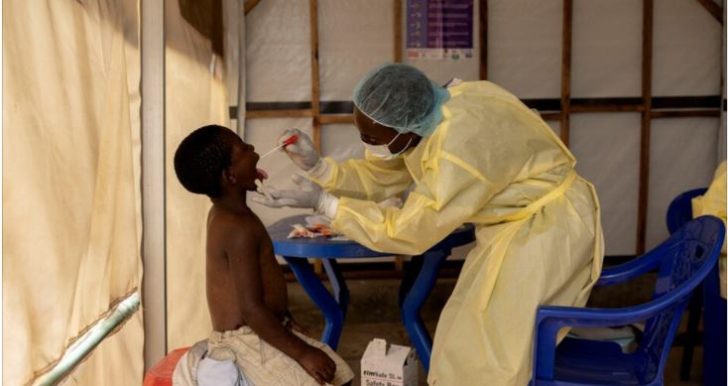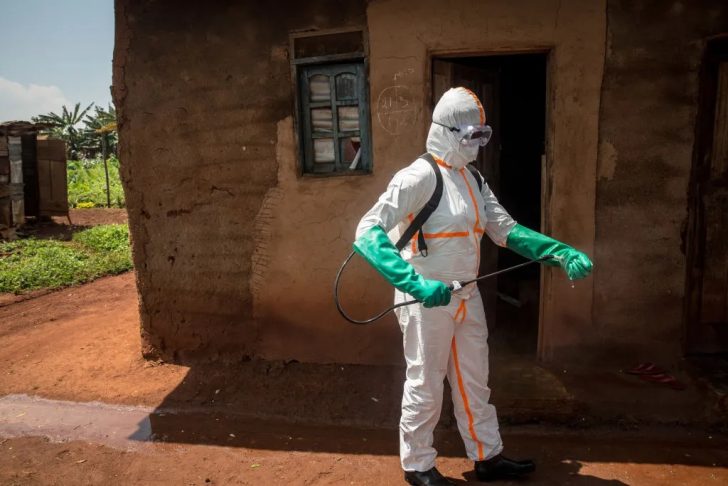A strange and deadly illness is sweeping through the Democratic Republic of Congo (DRC), leaving health officials scrambling for answers. Over 60 people have lost their lives, and more than a thousand have fallen sick in just a few weeks. The World Health Organization (WHO) is investigating the outbreak, working closely with local health teams to uncover the cause before it spreads further.
The first signs of trouble appeared in January 2025 in the remote village of Boloko. Several children became severely ill after eating a bat and died within two days, showing symptoms similar to hemorrhagic fevers like Ebola or Marburg. Soon after, more cases emerged, affecting entire communities and raising fears of another deadly epidemic in the region.
Symptoms and Rapid Spread
The illness moves fast, striking victims with fever, chills, headaches, vomiting, diarrhea, and stiff necks. Some also experience nosebleeds, a symptom often seen in severe viral infections. What makes this outbreak alarming is how quickly it turns fatal. Many patients die within 48 hours of falling sick, leaving little time for treatment.

GTN / By late February, the disease had spread to multiple villages, with the hardest-hit area, Bomate, reporting nearly all the cases and deaths.
WHO teams, along with Congo’s health officials, are racing to contain the situation. They are tracking down sick individuals, testing samples, and searching for patterns that could explain what is happening.
WHO Investigates Possible Causes
Health experts initially feared an outbreak of Ebola or Marburg, but early lab tests ruled out both. More than half of the samples tested positive for malaria, a common disease in Congo, but the severity of symptoms suggested something more was at play. Malaria alone could not explain why so many people were dying so quickly.
WHO’s emergency chief, Dr. Mike Ryan, points to another possibility. A poisoning event linked to a contaminated water source. He explains that the pattern of cases and the way symptoms develop suggest toxic exposure rather than a typical infectious disease.
Officials are now examining local water supplies and environmental factors to determine if chemicals or biological agents could be responsible.
Challenges in Containing the Outbreak
Fighting an outbreak in this part of the world is not easy. The affected villages are remote, with little access to healthcare. Many people live miles away from the nearest clinic, and by the time they seek help, it is often too late. Limited resources and poor infrastructure make rapid response efforts difficult, allowing the illness to spread unchecked.

E News / With no clear answers, some villagers are fleeing their homes, worried they might get sick.
This movement creates new risks, as potentially infected individuals travel to new areas, bringing the disease with them. Health workers are struggling to manage both the medical crisis and the growing panic among the local population.
Right now, scientists are working around the clock to get to the bottom of this mystery. More tests are underway, including checks for meningitis and other bacterial infections. Environmental samples, including water and food from affected areas, are also being analyzed.
It is a Global Health Warning
This outbreak is a stark reminder of how vulnerable some parts of the world remain to sudden health crises. Diseases, whether natural or caused by environmental contamination, can spread quickly when healthcare systems are weak. The DRC has faced repeated outbreaks of deadly diseases in recent years, from Ebola to measles, and now this unknown illness adds to an already heavy burden.
WHO officials warn that international attention could fade quickly if the outbreak is found to be caused by poisoning rather than a new virus. But the lesson remains the same. Global health security depends on early detection, strong healthcare systems, and swift international cooperation.
